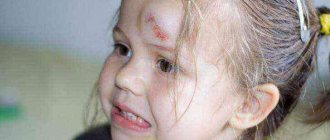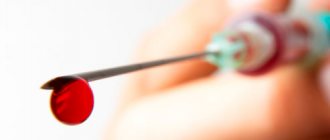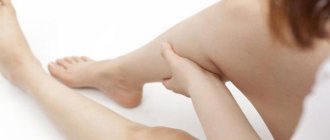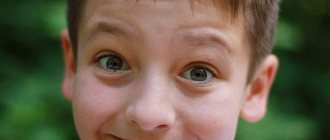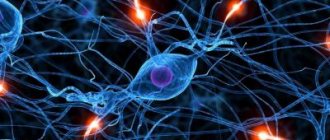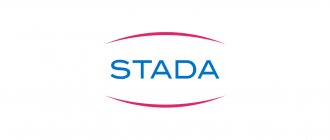Dysarthria (from the Greek dys - disorder, arthroo - pronounce articulately) is a disorder of sound pronunciation caused by damage to the innervation of the speech apparatus as a result of any brain damage. The difference from other speech disorders is that it is not the articulation of individual sounds that suffers, but the pronunciation of words as a whole.
Dysarthric speech is usually understood as unclear, slurred, muffled, often nasal-tinged speech. They say about such people that they have a “mouth full of porridge.”
This disease in adults is not accompanied by the collapse of the speech system: there is no impairment of auditory perception of speech, writing and reading. But in childhood, dysarthria often leads to a violation of the pronunciation of words and, accordingly, to writing and reading disorders, as well as to a general underdevelopment of speech. Such deficiencies can be corrected through sessions with a speech therapist.
Etiology of the disease
With dysarthria, the “technique” of speech suffers
, and not its semantic component.
The patient can express his thoughts, but those around him do not always understand what he said due to articulation disorders due to pathologies of the speech muscles. The causes of the disorders are:
- paresis (decreased muscle strength);
- spasms and excessive tone;
- hyperkinesis (involuntary movements);
- imbalance in muscle function;
- hypokinesia (insufficient pace and range of movements);
- pseudoparesis.
These conditions can occur alone or in combination and are the result of damage to areas of the brain.
Defects of brain segments are determined by heredity or disruptions in intrauterine development:
- toxicosis of the first and third trimester of pregnancy;
- various complications during the delivery process;
- lack of oxygen both before and during childbirth;
- premature birth;
- maternal illnesses during pregnancy, vitamin deficiency and bad habits (smoking, drinking alcohol).
Dysarthria can be acquired if a person has suffered from:
- meningitis;
- hydrocephalus;
- jaundice.
After suffering head injuries, severe poisoning and cerebral edema, the likelihood of the disease occurring is quite high.
Causes
Dysarthria is a speech disorder. The main reason is a disruption in communication between tissues and the central nervous system. The muscles of the face and mouth are limited in mobility, which is why it becomes difficult to pronounce words. Factors include damage to the central and peripheral nervous system or certain areas of the brain (for example, subcortical nuclei); in 60-80% of cases it is accompanied by cerebral palsy.
A child acquires a congenital pathology from the field of neurology if the mother during pregnancy:
- drank alcohol, smoked or used drugs;
- suffered from respiratory infections - ARVI or influenza;
- took medications that have a toxic effect;
- I was under a lot of stress.
In addition, factors include:
- fetal hypoxia;
- toxicosis of pregnancy;
- birth injuries, premature birth;
Deterioration of the nervous system occurs in preschool children (mostly under 2 years of age) for the following reasons:
- infectious inflammation in the cranium area;
- intoxication;
- traumatic brain injuries;
- hydrocephalus;
In adults, it appears as a result of head injuries, strokes, and brain tumors. As well as diseases of a neurological, degenerative or motor nature. It can occur without problems with speech perception through hearing or writing.
Types of pathology
There are several types of dysarthria:
- Bulbar
, in which there is unilateral or bilateral damage to peripheral neurons in the cervicothoracic region. The muscles of the oral cavity are sluggish, partially paralyzed, the tongue is flabby, the pharyngeal reflex is absent. - Pseudobulbar
, with bilateral disruption of the corticobulbar and pyramidal neurons in the cervical segment. The muscles are not atrophied. The tongue is bent back, tense. Paralysis is combined with spasms. - Cortical apraxic postcentral and premotor
. The functions of the cortex of the left hemisphere of the brain are impaired, which is why the articulatory apparatus does not work. - Subcortical
dysarthria arising from damage to the extrapyramidal nuclei. - Cerebellar
, in which speech actions are not coordinated.
In 95% of cases, the pseudobulbar variety is observed.
Possible complications
Dysarthria at the initial stage is dangerous for the normal psychological development of the child. Lack of speech intelligibility will interfere with normal communication and may also cause ridicule from other children. In this case, the baby’s social adaptation will be problematic.
A possible complication of severe dysarthria is anarthria. Pathology occurs as a result of a deep disruption of muscle groups. The child's face will resemble a mask, the lower jaw will sag slightly and lip movements will be limited. Speech is completely absent. Sometimes inarticulate sounds may be present.
We recommend: Seborrheic dermatitis in a child
Classification of pseudobulbar form
The disease can be mild, moderate or severe.
With a mild or erased degree, the patient:
- difficulty raising the tip of the tongue;
- clearly pronounces individual sounds;
- controls facial expressions well;
- holds the articulatory position specified by the doctor for more than 10 seconds;
- vocal cords close.
In the flow of speech, sounds are blurred, breathing is uniform.
Signs of a moderate condition include:
- difficulties in determining which part of the face the specialist touched;
- slurred, unclear and slurred speech;
- inexpressive facial expressions, asymmetrical face, open mouth at rest;
- the voice is harsh, fading towards the end of the phrase due to the divergence of the ligaments;
- tongue with a wide tip, deflected to the side;
- generally correct pronunciation, but certain groups of consonants are unclear;
- maintaining the required articulatory position with the appearance of tremors.
Hissing and fricative sounds are pronounced incorrectly. The pace of speech is slow.
In severe forms of the disease, the diagnosis is drawn “on the face”: it is amicable, mask-like, asymmetrical.
Other symptoms include:
- an open mouth with an asymmetrical tongue located on the outside, atrophied on one side;
- weak breathing;
- an unstable voice that fades in and out, then fades out;
- inability to perform mouth movements (chew, lick);
- nasality;
- distortion of sound pronunciation.
The child speaks indistinctly, unintelligibly, deafens voiced consonants and voices voiceless consonants, speech action is carried out while inhaling.
Diagnostics
Lack of timely treatment leads to distortion of the auditory perception of someone else's speech. The pathology does not directly threaten physical development, but difficulties in adapting to the social environment due to deviations can become a serious reason for the patient to abandon normal life and develop complexes. If the development of the disease is suspected, a neurologist and pediatric speech therapist can refer a small patient to:
- electroencephalography;
- Brain MRI;
- electromyography;
- electroneuromyography.
Additionally, a speech therapy examination is carried out to assess speech disorders. The specialist determines the level of speech development, studies the tempo, rhythm of pronunciation, rich vocabulary, and intelligibility of pronunciation. Attention is paid to the legibility of written speech and the nature of breathing at the time of conversation.
Mild symptoms
Dysarthria in children with normal psychophysical development is erased
.
Defects in articulation are not always noticed by parents and are attributed to the characteristics of growing up. At the age of 5 years, mild dysarthria
is diagnosed during an examination by a speech therapist of children attending preschool educational institutions.
First signs
Attentive father and mother notice the prerequisites for the disease already in infancy. The baby has a weak sucking reflex, so the breast is quickly replaced with a bottle. The order in which motor skills appear is disrupted: first stands up, then learns to sit; He starts walking earlier than crawling, and walking quickly tires him out. Jumping and stepping on stairs does not work. Difficulty holding the ball. For a long time, small objects are grasped with the entire palm rather than with the fingers.
In early and then in junior preschool age, children:
- eat without appetite;
- refuse meat, hard vegetables and fruits due to difficulties with chewing;
- place food behind the cheek;
- do not know how to rinse their mouth;
- cannot tie shoelaces, fasten and unfasten buttons, or zippers;
- the pencil and brush are held incorrectly and their pressure is not controlled;
- clumsy in physical education and dance classes;
- They cannot jump or stand on one leg because they lose their balance.
They do not feel musical tempo and rhythm, so it is difficult to teach them to act and sing in sync with the melody.
Formation of speech skills
Defects in the motor side of articulation lead to disturbances in the auditory perception of the sound system of the language.
Slurred pronunciation interferes with the development of clear hearing and control. Improper phonemic awareness causes delays in the development of grammatical skills. At older preschool age, children do not distinguish between grammatical forms, in particular the endings of words.
There are three types of erased dysarthria
: phonetic, phonetic-phonemic and general speech underdevelopment (OND).
| Variety | Signs |
| phonetic |
|
| phonetic-phonemic |
|
| ONR |
|
Corrective methods are selected by specialists depending on the form and are carried out over a long period of time.
Treatment of dysarthria in children
The treatment of dysarthria is further carried out by a speech therapist. During speech therapy classes, the child will develop:
- fine motor skills
- motor skills of the speech apparatus
- breath
- intonation, timbre and strength of voice
- correct pronunciation
In addition to classes with a speech therapist, it is important that the child receives medication treatment (nootropics), and also undergoes a course of physical therapy (massages, exercise therapy, acupressure, etc.). Non-traditional types of treatment also work well: play therapy, sand therapy or isotherapy, dolphin therapy.
In case of early diagnosis and treatment of dysarthria, as well as simple organic lesions of the nervous system, there is every chance of completely getting rid of the disease. At the same time, untreated dysarthria can significantly reduce a child’s ability to study normally, and also disrupts normal social contacts, which can have a very negative impact on a person’s quality of life.
Therapeutic measures
The sooner parents visit a doctor, the greater the likelihood of complete relief from tongue-tiedness.
With a mild degree of dysarthria and normal psychophysical development, timely initiation of therapy guarantees that by the age of 6 the child will be like his peers.
At the first signs of the disease, you need to be examined by a neurologist and speech therapist, who will assess the extent of brain damage and make an accurate diagnosis. Can be assigned:
- magnetic resonance imaging of the brain;
- electroencephalography;
- neurosonography, etc.
After the diagnosis is made, drug therapy, physical therapy, massage, breathing exercises, independent exercises and work with a speech therapist are carried out.
Types of treatment
A neurologist usually prescribes nootropic drugs to improve cerebral circulation. Exercises that focus on the face and upper shoulder girdle are recommended. The massage is carried out daily, starting from 2 minutes for the first time, and gradually its duration is increased to 15 minutes. The main movements are pinching and stroking all areas of the lower part of the face, as well as the soft palate. Regular massage reduces paresis, relieves hypertonicity, promotes responsiveness and coordinated work of the muscles of the articulatory apparatus.
Breathing exercises using the method of A. Strelnikova
. When bending over, exhale; when lifting the body, inhale.
Other methods of course treatment are also used: acupuncture, hirudotherapy, dolphin therapy.
The child must perform some exercises independently under parental supervision. Effectively imitate the mouth movements of people around you, stretch your lips forward and smile.
To strengthen the jaw muscles, you can place a piece of bandage in the child’s mouth and try to pull it out. To improve resistance, a lollipop can also be useful, which must be held in the mouth when the adult pulls the stick.
[media=
https://youtu.be/4N6Ml_D6u6c
]
Symptoms
The main symptoms of dysarthria: defects in voice and sound pronunciation in combination with disorders of speech motor skills and speech breathing.
Speech symptoms include disorders:
- sound pronunciations;
- intonation;
- phonemic functions;
- reading and writing;
- lexico-grammatical construction of sentences;
Non-speech symptoms of dysarthria include the following:
musculoskeletal disorders;
- emotional-volitional sphere;
- mental development;
- cognitive activity;
- articulation, muscle tone and breathing.
- unique personality formation;
Diagnostics
Several specialists are involved in making a diagnosis:
- The speech therapist examines the features of sound pronunciation disorders, characterizes other aspects of speech, and then reflects the patient’s condition in a special speech card.
- a practical psychologist examines general intellectual development, excluding psychosomatics and the influence of psychotrauma.
- after this, a neuropsychiatrist, relying on the opinion of a speech therapist and a practical psychologist, makes a diagnosis.
Correction, treatment methods
The goal of correction and treatment of dysarthria is to achieve speech that is understandable to others. For a good result, a complex effect is required. Speech therapy correction must be carried out in combination with exercise therapy and drug treatment.
A comprehensive treatment method for dysarthria consists of:
- medicines;
- physical therapy, physiotherapy, acupuncture;
- hardening and maintenance treatment;
- speech therapy work on the development and correction of speech;
- treatment of concomitant diseases.
The work of a speech therapist is aimed at developing articulation organs. Such impacts include:
- work on expressiveness of speech;
- correction of speech breathing and voice;
- articulation gymnastics;
- correcting the pronunciation of speech sounds;
- tongue massage.


